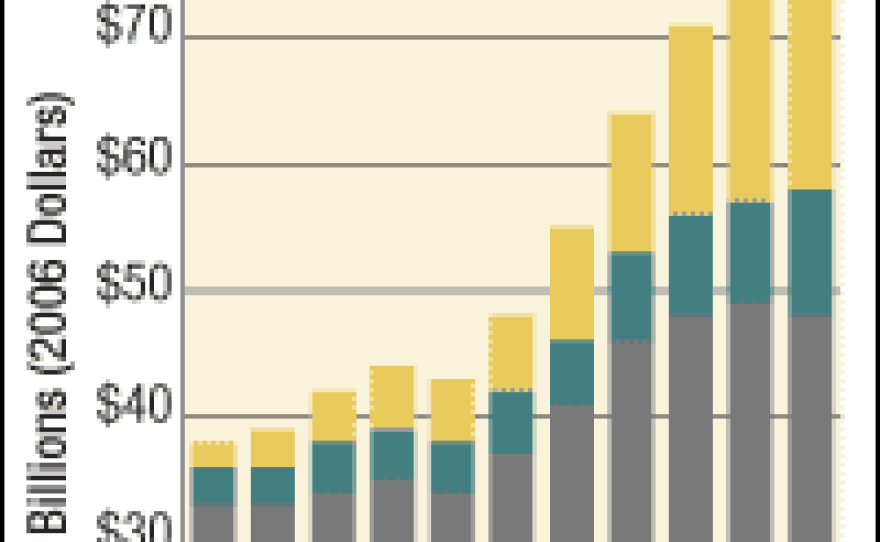

Among the immutable laws of physics that students learn about, here's one Newton never dreamed of: The cost of going to college always goes in one direction. Here's another: As student aid goes up, college costs rise faster.
According to Sandy Baum, senior policy analyst with the College Board, the average price of college is continuing to rise more rapidly than the consumer price index, and more rapidly than average prices in the economy.
This past year, the biggest jump in prices occurred at the nation's four-year public schools, where the sticker price went up 6.6 percent to more than $6,000 a year. At private schools, the increase was slightly smaller. But prices at private schools are much higher — close to $24,000 a year — so that slightly smaller percentage increase hurts much more.
But almost no one pays the sticker price out of their own pockets. Three-quarters of full-time undergraduates receive some form of student assistance.
So as colleges charge an average $6,000 per year, students will pay an average $2,600. At private schools, students pay a bit more than half of the $24,000 price tag.
Student Aid Gap
According to Baum, student aid continues to grow, but not as fast as tuition, and not enough to make up for the difference between family incomes and the price of college.
Experts say that small increases in the amount of tuition that families actually pay can convince some that they can't afford to send a child to school.
Now, these numbers are all averages taken from students and schools across the country. Robert Shireman of the Project on Student Debt says averages mask some of the pain families are feeling.
"And one way to look at what is happening with actual families is to look at their debt levels," Shireman said. "We know that those are going up at a rate that is even faster than the increase of prices at the institution."
The cost of tuition doesn't account for room and board, which has not been increasing much, but it still costs much more than tuition does at public institutions. That fact can pinch low-income students in particular, who pay a much higher portion of the family income to go to school.
So how is a family supposed to choose a college when they have little idea of how much of that sticker price they will have to pay? Shireman has been working with 30 schools that already disclose that information up front.
According to Shireman, a prospective student tells a school his or her family income or ability to pay. The school then calculates how much money — on top of the expected contribution — the family would need to take out in loans or work-study in order to make up the difference.
Colleges and universities say families should not expect the upward trend in costs to stop any time soon. They say that increases in costs for energy and health care will continue to drive their prices up.
Copyright 2022 NPR. To see more, visit https://www.npr.org. 9(MDAzMjM2NDYzMDEyMzc1Njk5NjAxNzY3OQ001))






